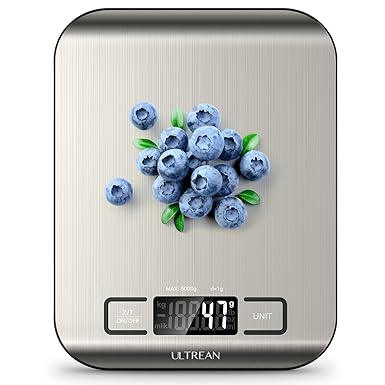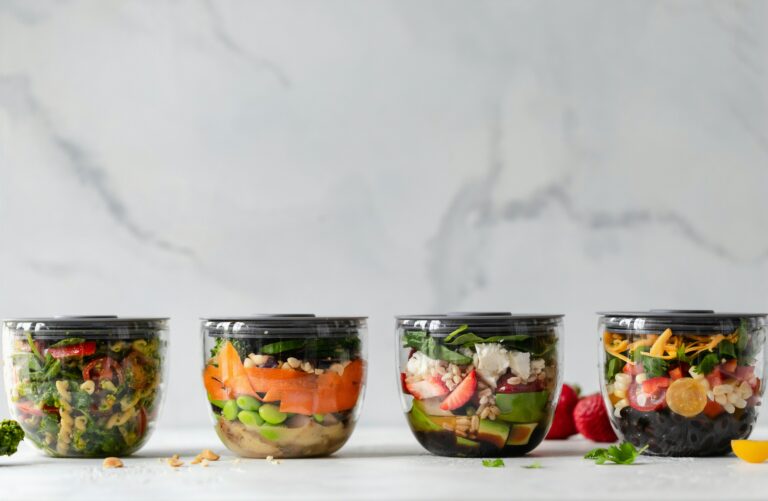how to count macros for recipes using homemade ingredients
Are you counting macros but make homemade ingredients? You know what i’m talking about, you make your own mayonnaise and then add it into other recipes you make, like your tuna salad.
You make your own turkey sausage and then put it in an egg bake you make?
I mean surely, you must be way too extra to actually track the macros of what you are eating.
WRONG.
It’s actually quite easy to count macros of your homemade ingredients, and recipes using them. You may find that some sauces or marinades you make are actually quite low cal. Sometimes you can find ways to make them lower cal, like big mac sauce or blue cheese sauce by substituting greek yogurt.
Some homemade ingredients I like to make are avocado oil mayonnaise, big mac sauce, blue cheese sauce, maple dijon vinaigrette, sweet and sour sauce, BBQ sauce, and teriyaki marinade. This saves me SO MUCH on cost and allows me to customize these things to fit my dietary preferences.
How to Calculate the Macros of Homemade ingredients

How to Calculate Macros of Homemade Ingredients
I will show you how to easily calculate the macronutrients of any homemade ingredients you make! Ideally you should make the framework of this recipe calculation before you are actually making your ingredient and have it available to enter information while you are making your recipe.
Materials
- Original food item containers or a computer or phone
Tools
- Kitchen Scale like https://a.co/d/fvxKIGB
- My Macros + app
Instructions
- Open up the MM+ app
- Click the top left corner pull down menu
- Select Recipes
- Create New Recipe
- Enter Custom Ingredient Name for your personal identification - some people include a date but I re-edit the recipe if I think there were changes. To be technical and precise, you should recalculate each time.
- Add your ingredients that have nutritional value (things like water, spices, and salt need not be included!)
- Add Custom Ingredient for each ingredient in your recipe
- Enter name of ingredient (i.e., egg or unbleached all purpose flour)
- Copy the exact information from package. You will see "serving size" with a gram amount. Enter that, along with the corresponding Calories, Fat, Protein, and Carbohydrates for that particular serving size. You also have the option to include other nutrients if you'd like. If you do not have packaging, find the company website nutritional information. You will also need to use a website like nutritionix.com to calculate the nutrition of whole ingredients like eggs or vegetables.
- Press Save Food
- Repeat for remaining ingredients. If you need to take a break, press save or it will time out and delete your information. You can always go back in and finish an incomplete recipe if you saved it.
- Press Save
- Enter the weights in grams of the ingredients in your homemade ingredient in the blue oval as you weigh them in your recipe. You can also choose to use a notepad for this step and then enter them into the app afterwards.
- Press Save
- Go into Recipes
- Select your Recipe
- Select at the top drop down to select which meal you will be consuming this (if applicable)
- Weigh your ingredient in grams (TARE the weight of your container!)
- Enter piece weight in the blue oval
- This is the nutritional value of your homemade ingredient!
To Ensure you Can Use Your Homemade Ingredient in a Recipe:
1. Find your ingredient under Recipes
2. Enter 100 G (or any theoretical amount) as the amount of your ingredient you are using
3. Jot down the Protein, Carbohydrate, and Fat along with your theoretical gram amount
4. No need to save, just back out
5. Open Add Custom Food at the very bottom of the pulldown menu
6. Enter your theoretical gram amount along with the corresponding Protein, Carbohydrate, and Fat values
7. Press Save
8. You have now saved your homemade ingredient as a Custom Ingredient to be incorporated into any custom Recipes!
Notes
This could technically be done by hand. I believe you would have to solve multiple algebraic equations to calculate the individual macronutrients in the original weight by the new after cooked weight. Despite the fact I homeschool and I majored in science, not doing this is worth the $3 it costs to download the MyMacros+ app.
Recommended Products
As an Amazon Associate and member of other affiliate programs, I earn from qualifying purchases.
How to Make a Recipe USING Your Homemade ingredients

How to Calculate Macros of a Recipe Using Homemade Ingredients
I will show you how to easily calculate the macronutrients of any homemade recipe you make, including ones with homemade ingredients! Ideally you should make the framework of this recipe calculation before you are actually making your recipe so you have it available to enter information while you are making your recipe.
Materials
- Original ingredient containers or a computer or phone
Tools
- Kitchen Scale like https://a.co/d/fvxKIGB
- My Macros + app
Instructions
- Weigh the empty, clean dish that you plan on using for making the recipe in and write down the weight.
- Open up the MM+ app
- Click the top left corner pull down menu
- Select Recipes
- Create New Recipe
- Enter Custom Recipe Name for your personal identification - some people include a date but I re-edit the recipe if I think there are changes. To be technical and precise, you should recalculate each time.
- Add your ingredients that have nutritional value (things like water and salt need not be included!)
- Add Custom Ingredient for each ingredient in your recipe UNLESS your Homemade ingredients are already saved in your Custom & Favorites, along with any other store bought foods you have already entered.
- If you have Custom Ingredients already saved, you can search for them in the Custom & Favorites, highlight them, and press Save.
- If you have a food that is not already in your database, select add Custom Ingredient at the bottom of the bar
- Enter name of ingredient (i.e., egg or unbleached all purpose flour)
- Copy the exact information from package. You will see "serving size" with a gram amount. Enter that, along with the corresponding Calories, Fat, Protein, and Carbohydrates for that particular serving size. You also have the option to include other nutrients if you'd like. If you do not have packaging, find the company website nutritional information. You will also need to use a website like nutritionix.com to calculate the nutrition of whole ingredients like eggs or vegetables.
- Press Save Food
- Repeat for remaining ingredients. If you need to take a break, press save or it will time out and delete your information. You can always go back in and finish an incomplete recipe if you saved it.
- Press Save
- Enter the weights in grams of the ingredients of your recipe in the blue oval as you weigh them in your recipe (or alternatively from the recipe if you were exact). You can also choose to use a notepad for this step and then enter them into the app afterwards.
- Press Save
- Complete making your recipe
- After your meal is complete and before eating (the hardest part!!!) weigh your meal on your scale. You can TARE the weight of a hot pad on your scale before adding any hot pans. DO NOT put hot pans directly on your scale! Subtract the weight of the pan that you determined beforehand. Find your custom recipe again and edit the total servings numeral with how many grams, and change the serving name below it to grams.
- Press Save
- Go into Recipes
- Select your Recipe
- Select at the top drop down to select which meal you will be consuming this (if applicable)
- Cut what you want to eat
- Weigh your piece in grams (TARE the weight of your plate!)
- Enter piece weight in the blue oval
- This is the nutritional content for your portion of the recipe!
Notes
This could technically be done by hand. I believe you would have to solve multiple algebraic equations to calculate the individual macronutrients in the original weight by the new after cooked weight. Despite the fact I homeschool and I majored in science, not doing this is worth $3
Recommended Products
As an Amazon Associate and member of other affiliate programs, I earn from qualifying purchases.
You can Customize Macro Counting to ANY Eating Lifestyle
It’s easy to believe that macro counting for weight loss won’t work for you when you make a lot of homemade foods. Of course tracking and making recipes is another step. New things always feel hard but get easier once you get into the habit. And when you know that counting macros will equal you moving closer to your weight loss goals, you can be assured that you are making a good time investment.
Are you going to try and make a recipe using homemade ingredients?
Will you take a faith fall into the world of macro counting and determining what you are eating and if it’s conducive to your weight loss goals? The true accountability of the scale and tracking hurts! But not everything that hurts is bad – this knowledge sets us free. We are now equipped with the power to control our weight!
FOLLOW ME FOR MORE!
Learn more about me here!
If you need to get consistent with your self care, read here <3
Purchase a kitchen scale here!
If you want to know more about how to track macronutrients to meet your health goals read here!
If you’d like an example of a quick dinner meal we enjoy check this out!
*As an Amazon Associate I earn from qualifying purchases*







